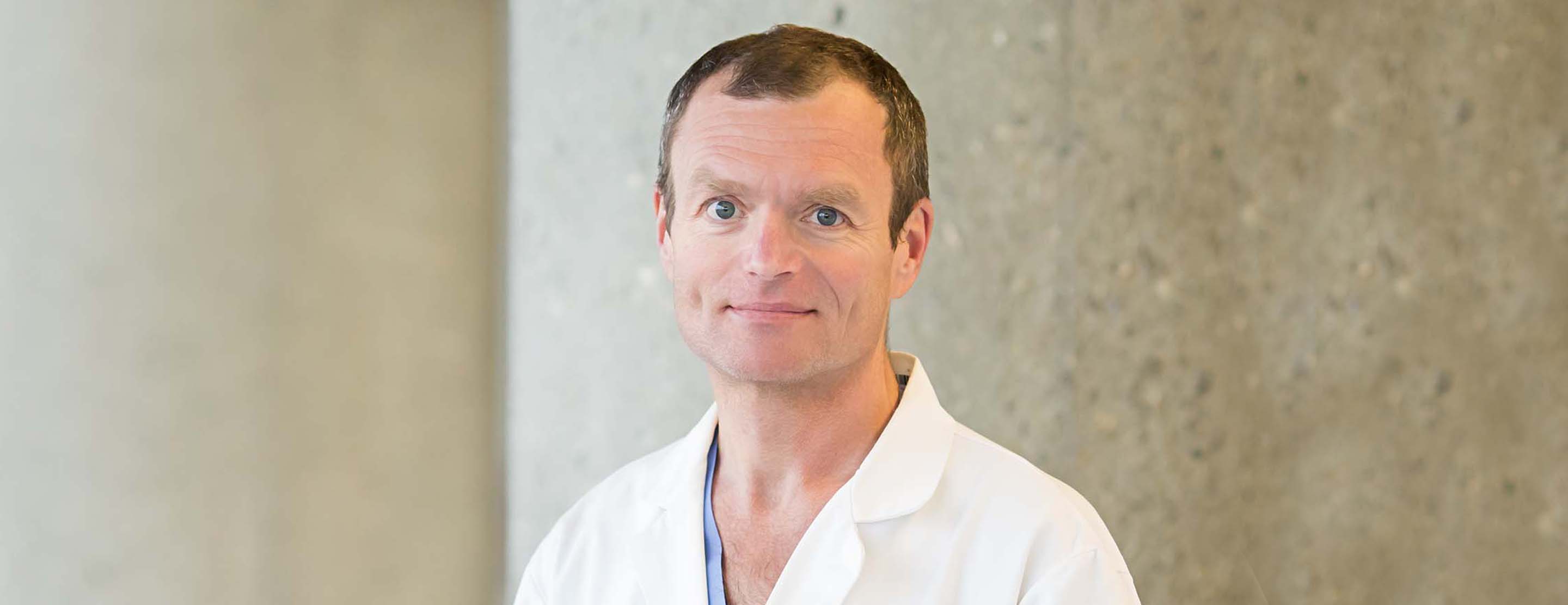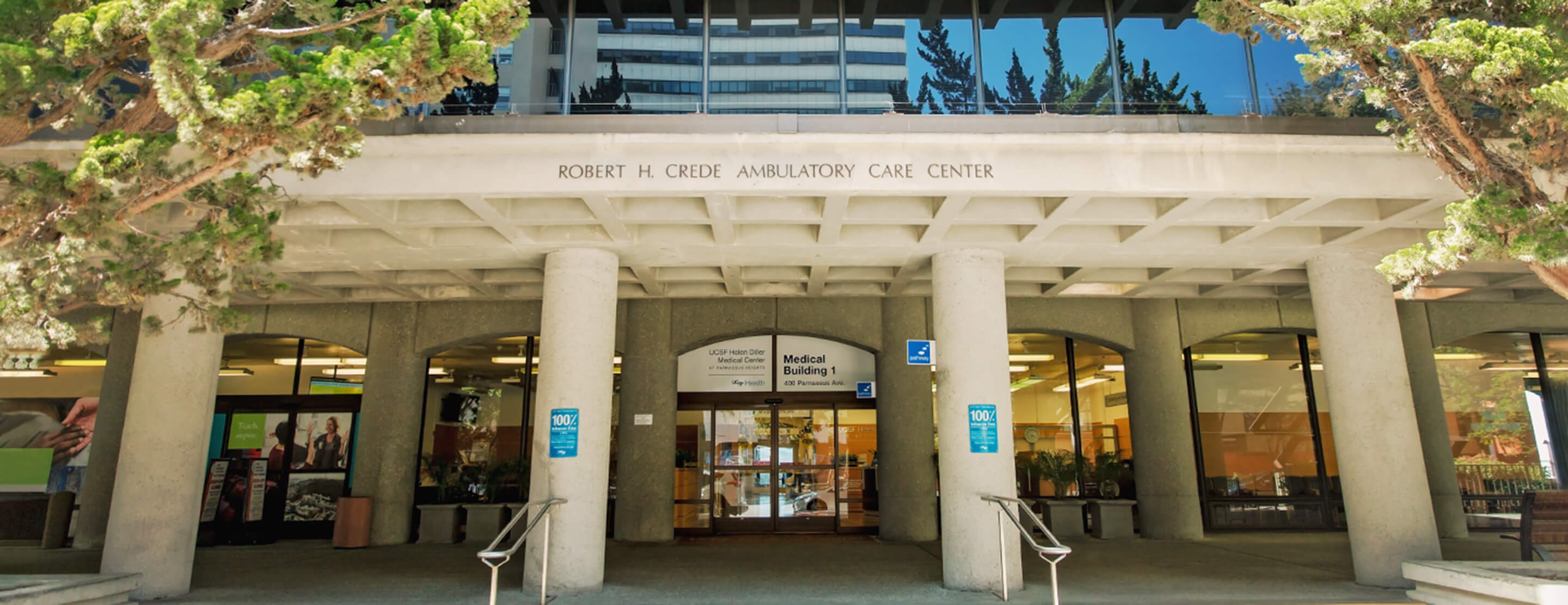Dr. Andrew Posselt is a transplant surgeon at UCSF where he specializes in adult and pediatric kidney, liver and pancreas transplants. He heads the pancreatic islet transplantation program and is the co-director of the UCSF Bariatric Surgery Center. In addition to caring for patients, Posselt is involved in research on islet transplants, the mechanisms behind the tolerance or rejection of transplanted tissue and the metabolic and biochemical consequences of bariatric surgery. Posselt joined UCSF in 2003.

Doctor Q&A: Andrew Posselt
You have an interesting range of credentials; you trained in internal medicine, immunology and surgery. Was this all planned as a way of working your way to being a transplant surgeon?
Not really. I got interested in surgery because as a kid one of my hobbies was taxidermy and I really enjoyed the technical and anatomic aspects of it. I went to medical school at the University of Pennsylvania and worked in the transplant lab because I enjoyed the surgical aspects of the field. I eventually did my PhD dissertation on islet transplantation. But while I really liked surgery, I opted for a residency in internal medicine because I had a great experience on my medicine externship as a medical student and felt that the specialty would allow me to become the best doctor possible. I enjoyed immunology as well however, so my ultimate plan was to train as a hematologist and specialize in bone marrow transplantation.
I came to UCSF for my medicine residency and while I enjoyed it tremendously, I really missed the technical and procedural aspects of surgery. Then, just as I was finishing it and getting ready for my fellowship in hematology, I did a rotation with Dr. James Ostroff, a gastroenterologist who performs many endoscopic procedures. It again reminded me of my interest in procedurally-oriented specialties and I finally decided that I really wanted to be a surgeon. So with about a week to go before the deadline, I applied through the match and was fortunate enough to get an intern spot here at UCSF in the general surgery program.
Was that hard going back to being an intern?
Not at all; I loved it. I was so happy. I was finally able to be in the OR (operating room) and the clinical work was easier for me because of my prior experiences as a medicine resident. Near the end of my residency I started working with Not at all; I loved it. I was so happy. I was finally able to be in the OR (operating room) and the clinical work was easier for me because of my prior experiences as a medicine resident. Near the end of my residency I started working with Dr. Peter Stock, one of the other transplant surgeons, who headed up the islet program before me., one of the other transplant surgeons, who headed up the islet program before me.
When you were in medical school, islet transplants were a distant dream. When did they become a viable option for people with diabetes?
Probably in 2000. That's when a group from the University of Alberta headed by Dr. James Shapiro, published a paper in the New England Journal of Medicine describing a new protocol that reproducibly allowed patients to achieve insulin independence. He accomplished this by changing the immunosuppressive protocol, donor selection, and the islet isolation process. This generated a lot of excitement because it provided a less invasive islet replacement strategy that pancreas transplantation. Unfortunately, this excitement was short-lived because we eventually discovered that after a year or two the transplanted islets started failing and the patients had to go back on insulin.
What was the problem?
No one really knew, but it seemed to be a combination of immune and non-immune destruction. Nonetheless, people started devising better techniques for isolating donor islet cells and different immunosuppressive regimens and patient outcomes started improving again.
Who are candidates for an islet transplant?
The ones who benefit most are the diabetics who have really difficult-to-control blood sugars. Usually the most significant and dangerous issue they're dealing with is low blood sugar levels. Their blood sugar can drop unexpectedly and if it goes too low they could lose consciousness If this happens while they're driving it can have disastrous consequences. If it happens while asleep, the patient may not wake up and may pass away due to the persistently low blood sugar. And unfortunately, the longer you have diabetes, the less you're able to tell when a low is coming on. So it's people like that, with really poor control, who are the best candidates. A diabetic who's on a stable insulin regimen with their blood sugars and AIC hemoglobin well controlled won't benefit as much from a transplant.
Does a transplant allow them to stop taking insulin?
That's the goal. But even if they don't come off insulin, they have a much easier time controlling their blood sugars. The islets provide some baseline insulin production, so the lows disappear. It's really quite amazing.
How many transplant patients become totally insulin-free?
This is somewhat center-specific. Here at UCSF, our current insulin independence rates are over 80 percent.
Will the patients be insulin-free for the rest of their lives?
Probably not, but about 50-60 percent can remain insulin-free five years after their transplant, which is about the same rate as for those who have received a pancreas transplant. So while it's not a cure for all people with diabetes, it's certainly a cure for some. There's clearly much more work to be done, but we've come a long way.
How does an islet transplant compare to a pancreas transplant?
A pancreas transplant probably gives better glucose control, but the procedure is quite complex and fraught with potential complications. An islet transplant takes 40 minutes with just local anesthesia; a pancreas transplant typically takes 4-8 hours under general anesthesia — you're in the hospital for seven to 10 days and if there are complications, you may be there significantly longer. In addition, many patients are not candidates for the surgery — for example, at our center, the cut-off age is 45 years old, and the patient must be free of significant heart disease.
Can anyone with serious diabetes get an islet transplant?
Currently the only way to get an islet transplant is through a clinical trial. Medicare will only cover the procedure if the patient is part of a trial funded by the National Institutes of Health. UCSF is part of an ongoing multicenter trial that will hopefully demonstrate that islet transplants are a viable therapy. The ultimate goal of this study is to obtain approval by the Food and Drug Administration. Once this happens, private insurers will be more likely to cover it and more people will be able to undergo the procedure.
You also do bariatric surgery, right?
We perform bariatric surgery on people who are severely overweight. But more and more commonly, we are doing bariatric surgery on patients who need a transplant but are not candidates due to their weight. Obesity is very common in patients awaiting transplant, and if a patient is considered severely, or morbidly obese, they generally can't receive an organ until they lose sufficient weight. In the past, we'd tell them they needed to lose weight. But they usually are not able to due to their chronic disease and fatigue associated with it. So we started doing bariatric surgeries on some of these patients several years ago. They've actually done very well and a number have gone on to receive transplants.
Do you the use the typical bariatric procedures?
We usually perform a sleeve gastrectomy, which is a little different from the standard gastric bypass. In the bypass, a small pouch is created out of the stomach and bowel is connected to it. The small pouch size gives a feeling of satiety even with small amounts of food and so the patient does not eat as much. With the sleeve, you cut out most of the stomach and make it into a tube; it still narrows the stomach, so the patient doesn't eat as much. But it's easier perform than a bypass and it allows the patient to take more medications than if they just have a tiny pouch for a stomach. So it’s good for patients who are sicker, and like transplant patients, are on a lot of meds. And their weight loss is quite good.
Is this an unusual program?
I am not aware of any other centers performing this procedure in this patient population, so I guess it is. But there is a tremendous amount of interest in it, and I think a number of centers will begin to perform this procedure in transplant candidates in the near future.
I understand you speak Czech, German, French and Spanish. How did you come to be so multilingual?
I was born in the Czech republic but my family left the country a couple of years after the Russian occupation, when I was eight. We emigrated to what was then West Germany and lived there for two years before moving to Toronto. My parents eventually went back to Germany and are there still. So, I know Czech, German, and, of course, English through moves to each country. I learned Spanish and French through language courses in high school that I still seem to remember, though not all that well.
What do you like best about working at UCSF?
I like the fact that there are great people surrounding you, so if you need any kind of advice, you can always find someone who is an expert in the topic. It's a supportive environment. I also really enjoy working with students, residents and fellows and find it very rewarding to contribute to their education and watch their progress.










